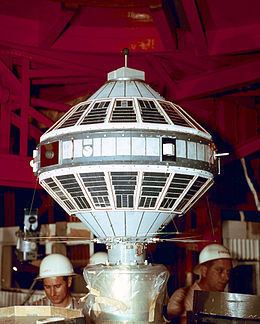Harvard designation 1959 Iota 1 Mission duration 2 years Inclination 50.28° Period 1.6 hours Last contact 24 August 1961 | SATCAT no. 22 Launch date 13 October 1959 Inclination 50.28° | |
 | ||
Similar Explorer 8, Explorer 6, Explorer 11, Explorer 9, Explorer 10 | ||
How to run internet explorer 7 in windows 10
Explorer 7 was launched October 13, 1959 at 10:36 a.m. Eastern Time by a Juno II rocket from Cape Canaveral Air Force Station to an orbit of 573 km by 1073 km and inclination of 50.27°. It was designed to measure solar x-ray and Lyman-alpha flux, trapped energetic particles, and heavy primary cosmic rays. Also Secondary objectives included collecting data on micrometeoroid penetration and molecular sputtering and studying the Earth-atmosphere heat balance.
Contents
Launch was originally scheduled for late September 1959, but the mission was delayed for a week after a Jupiter IRBM test on an adjacent pad failed shortly after liftoff, causing flying debris to hit Explorer 7's launch vehicle. However, the damage to the booster was minor and could be easily repaired.
Significantly, it also carried Verner Suomi's flat-plate radiometer, improved with the help of Robert Parent, that took the first Earth radiation budget measurements from space and initiated the era of satellite studies of the climate. Using both satellite observations of the Earth's heat balance and atmospheric cooling rates measured by net flux radiosondes, Suomi established the important role played by clouds in absorbing radiated solar energy. These observations established that Earth’s energy budget varies markedly due to the effect of clouds, the surface albedo, and other absorbing constituents. Using these instruments, Suomi and his team discovered that the Earth absorbed more of the Sun's energy than originally thought and demonstrated that it was possible to measure and quantify seasonal changes in the global heat budget.
The satellite weighed 41.5 kg, was 75 cm high and 75 cm wide. Powered by solar cells it also carried 15 nickel-cadmium batteries around its equator.
It transmitted data continuously through to February 1961 and went dead on August 24, 1961. It is still in orbit.
